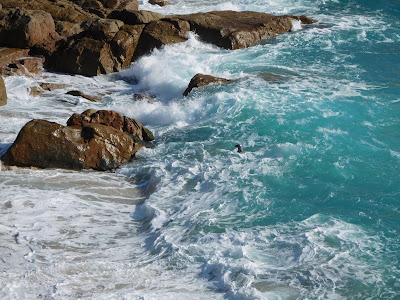Leaf 1 – Essays on Haiku
.jpg) |
| Tsuchiya Koitsu - Ueno Shinobazu no ike (1930) |
This was a short essay, titled
‘On Haiku’, which I originally wrote circa 2003. At the time I had been a
regular contributor to ‘still’ – a very beautiful and professionally produced
little magazine which described itself as “a journal of short verse.” Published
in the UK, it was edited by ai li chia and ran from 1997 to 2001. I was (and continue
to be) very proud of it and my small contributions to its pages. I was very
young at the time, and reading some of my poems from that period, I can see I
was still somewhat naively venturesome in my early efforts at haiku and short
verse, but ai li was a wonderfully thoughtful and encouraging editor. I remain
very grateful to her for that. It was always a real joy receiving ‘still’
through the post. Accompanied by elegant notes from ai li, always handwritten
on thin tissue paper in black ink, with red hanko stamps. A lot of time, effort and
love went into the creation of that little ‘zine’, as the small press poetry
magazines were called in those days. I still have the full run of ‘still’
sitting proudly on my bookshelf, twenty volumes plus one anthology – cherished
tomes standing alongside my books on and by Matsuo Bashō, R.H. Blyth, et al. They
have followed me on many a house move in the UK, ultimately ending up here in
Tokyo, next to a window with a wonderful view of Mount Fuji – something remarkable
which, if anyone had foretold me back in those days, I’d never have believed
might come to pass. If I were writing this essay now, I would no doubt write it
very differently. But I think it’s best to leave it as it is, and simply post
it here as a starting point, some three decades on, now in 2025. Looking back,
in order to begin looking forwards. It’s been many years since I last shared
any of my short verses in public. I am doing so now purely for the sake of my
own amusement, but if it should happen to be of passing interest to others of
like-mind and outlook, then I hope that’s a good thing.
.jpg) |
| Kajita Hanko - A Nap (1906) |
ON HAIKU (c.2003)
after rain -
shining green
leaves,
the sound of
birdsong.
You want to learn haiku? ---------
Don’t. --------- You already know how.
The art of haiku is clear – it is
innate, something which everyone possesses. Haiku is. You see haiku. You feel
haiku. Because haiku is. And because haiku is – haiku isn’t so simple.
Although haiku looks short, it isn’t
short. Haiku is concise. Although haiku looks quick, it isn’t quick. Haiku is
mindful. As a form of verse haiku is centred upon brevity. Its virtue is to be
pure and untrammelled. Haiku speaks. It says more by appealing to the innate
virtue which resides in the heart of all living things. Haiku speaks of truth.
Haiku works through honesty and clarity. Haiku is open.
There is a lot of discussion at the
moment about haiku and its place in modern literature. Many people are reading
haiku and many people are writing haiku. Today haiku is definitely an art form
which is rapidly disseminating from its point of origin in Japanese literature.
This is because the essence of haiku is universal. Haiku is nature. Haiku is
mind. Haiku is a double reflection. The world as it is. The world as we feel
it. Instance and response. Image and feeling. Haiku appeals because of its
benevolence. To slam haiku (and certainly modern haiku does have its
detractors) is to close one’s mind.
Haiku is freedom. --------- Or at
least, that is how I feel it.
through mist and
ripples of cloud
- evening sun.
 |
| Kobayashi Issa - Orphan Sparrow Haiku |
我と来て あそべや 親のない雀
ware to kite asobeya oya no nai suzume
Come to me / and let’s play / little orphan sparrow
- Kobayashi Issa (1763-1828).



.JPG)
.JPG)
.jpg)
.jpg)
.JPG)



.JPG)


%20National%20Gallery.png)
.jpg)
.png)
.jpg)
.jpg)
.jpg)
.jpg)

.jpg)
.JPG)
.JPG)
.jpg)
.jpg)
